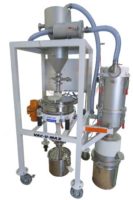3D printing – in which computer control is used to create a three-dimensional object -- has captured the public’s imagination and been hailed as the beginning of a third industrial revolution. With its cost decreasing and interest in it increasing as an ever-expanding range of applications is explored, it is likely that more and more workers will be involved with it.
Which begs the question: is 3D printing safe?
VOCs emitted
New research published in the Journal of Occupational and Environmental Hygiene (JOEH) has found that common filaments used in 3D printers can emit volatile organic compounds (VOCs) during the printing process. According to the EPA, excessive exposure to VOCs can lead to eye, nose and throat irritation; headaches; loss of coordination; and nausea.
Authors Szymon Wojtyla, Piotr Klama, and Tomasz Baran tested the fused deposition modeling (FDM) 3D printing process, the most common process found in commercial 3D printers. FDM devices work by heating filaments at various temperatures. The authors found that four common filaments-acrylonitrile-butadiene-styrene (ABS), polylactic acid (PLA), polyethylene terephthalate (PET), and nylon-emit VOCs even at temperatures below the printing temperature.
Ventilation is key
One way to control VOC emissions from 3D printers is through photocatalytic filters, which use ultraviolet light to limit exposures. The authors add that good practice for using 3D printers includes good ventilation. While printing in a large, well-ventilated room is not a threat to the user, the use of a 3D printer in a room with poor ventilation could lead to a hazardous increase of VOCs in the air.
For more information, read the full study in the JOEH.
About JOEH
JOEH is published jointly by the American Industrial Hygiene Association® (AIHA) and the American Conference of Governmental Industrial Hygienists (ACGIH®). JOEH enhances the knowledge and practice of occupational and environmental hygiene and safety. It provides a written medium for the communication of ideas, methods, processes, and research in the areas of occupational, industrial, and environmental hygiene; exposure assessment; engineering controls; occupational and environmental epidemiology, medicine, and toxicology; ergonomics; and other related disciplines.



